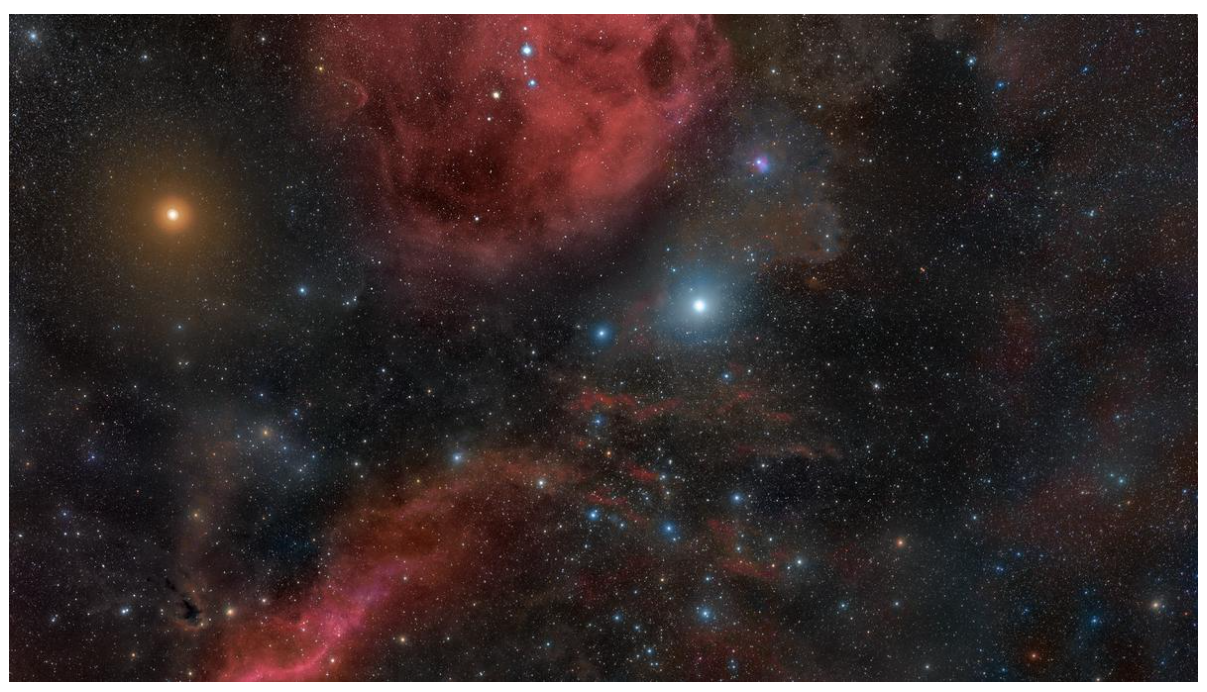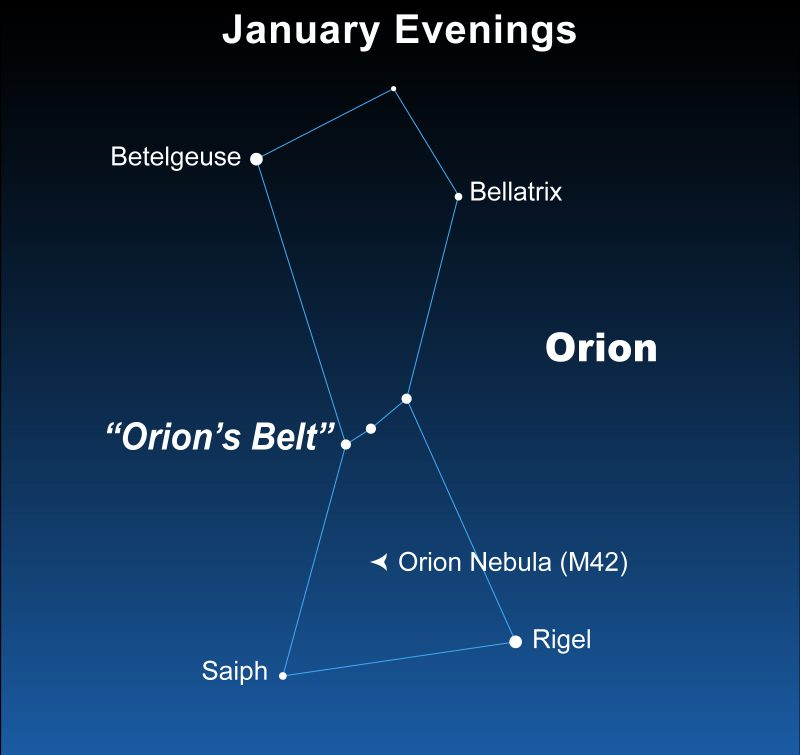Red Supergiant Star Betelgeuse | 21 Jun 2023
Why in News?
The bright red star Betelgeuse, known as 'Thiruvathirai' or 'Ardra' in Indian astronomy, captivates observers with its prominent position in the constellation Orion.
- Recent research conducted by Japanese and Swiss researchers has shed light on the star's pulsation patterns.
What is Betelgeuse's Pulsation?
- About Betelguese:
- Betelgeuse is a red supergiant star that is nearing the end of its life. It is the second-brightest star in the constellation of Orion, after Rigel.
- Scientists noticed that Betelgeuse was mysteriously dimming in late 2019 following a traumatic outburst caused by the star blowing off a large portion of its visible surface.
- Betelgeuse varies in brightness because of two main factors: changes in its surface temperature and changes in its size.
- As a red supergiant, Betelgeuse has a very unstable outer layer that is prone to convection and pulsation.
- Betelgeuse is a red supergiant star that is nearing the end of its life. It is the second-brightest star in the constellation of Orion, after Rigel.
- The Pulsating Mechanism:
- The pulsation of Betelgeuse refers to the periodic contraction and expansion of the star.
- Researchers have compared the observed pulsation of Betelgeuse to theoretical estimates, indicating that the star is in its late carbon-burning stage.
- Pulsation periods provide valuable insights into the star's radius, luminosity, and mass, affirming its current phase of core carbon-burning.
- Similar to a pot's lid lifting to release steam, red giant stars expand and contract due to heating and cooling of hydrogen in their outermost layers.
- The star's outermost envelope contains cooler neutral hydrogen, which absorbs heat from the interior, causing the star to expand.
- As the temperature rises, hydrogen becomes ionised and can absorb more heat, leading to a forceful expansion and ejection of the outermost shell.
- The cyclic nature of this process results in periodic dimming and brightening of the star, observable from a distance.
- The pulsation of Betelgeuse refers to the periodic contraction and expansion of the star.
- Stages of Evolution:
- Stars like Betelgeuse fuse hydrogen into helium during their initial stages, which helps maintain a balance between gravity and energy release.
- Massive stars like Betelgeuse run out of hydrogen fuel in a few crore years, when they switch to using helium to make carbon. Helium runs out in about 10 lakh years.
- As each stage progresses, the burning of elements becomes faster, with carbon burning in a few hundred years and silicon burning in about a day.
- Afterwards red giants briskly consume one by one the elements of the periodic table, until finally their core brims with iron.
- Once the core is rich in iron, the temperature and pressure within the star drop. With nothing to stop it, gravity compresses the core and turns it into a neutron star or a black hole.
- As each stage progresses, the burning of elements becomes faster, with carbon burning in a few hundred years and silicon burning in about a day.
- Betelgeuse's late-carbon stage signifies the terminal phase before the star's imminent collapse.
What is the Constellation Orion?
- Constellation:
- A constellation is an area on the celestial sphere in which a group of visible stars forms a perceived pattern or outline, typically representing an animal, mythological subject, or inanimate object.
- They are useful in assisting astronomers and navigators to locate certain stars
- Officially, there are 88 recognized constellations in the night sky. These constellations were defined and established by the International Astronomical Union (IAU).
- IAU was founded in 1919, headquartered in Paris, France.
- A constellation is an area on the celestial sphere in which a group of visible stars forms a perceived pattern or outline, typically representing an animal, mythological subject, or inanimate object.
- Constellation Orion:
- It is a prominent constellation that can be seen throughout the world.
- It is located on the celestial equator and is best visible in the evening sky from January to April in the Northern Hemisphere, and from November to February in the Southern Hemisphere.
- It is a prominent constellation that can be seen throughout the world.


